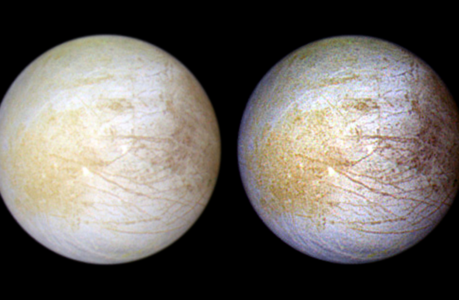Discover the enchanting realms of Io, Europa, Ganymede, and Callisto – the captivating moons of Jupiter.
Introduction
Jupiter, the largest planet in our solar system, has always been a subject of fascination for astronomers and space enthusiasts alike. Its immense size and striking beauty are accompanied by a system of captivating moons that orbit around it. Among these celestial companions, four moons stand out as the largest and most intriguing: Io, Europa, Ganymede, and Callisto. In this article, we embark on a journey to explore the wonders of these four moons and uncover their distinctive characteristics.
1. Io: The Volcanic Moon
Io, the innermost of Jupiter’s largest moons, is a world of extreme volcanic activity and surreal landscapes. It is the most volcanically active object in the entire solar system. The surface of Io is dotted with hundreds of volcanoes, constantly erupting and spewing out plumes of sulfurous gases. These eruptions create a vivid display of vibrant colors, including shades of yellow, orange, and red.
Scientists believe that the volcanic activity on Io is a result of tidal heating caused by the gravitational interactions between Jupiter and the other Galilean moons. The intense tidal forces exerted by Jupiter’s gravity generate friction within Io’s interior, leading to the violent volcanic eruptions.
Exploring Io’s volcanic activity provides valuable insights into Earth’s geological processes. By studying Io, scientists can gain a deeper understanding of the geological forces that shape our own planet.
2. Europa: The Frozen Ocean Moon
Europa, the second of Jupiter’s largest moons, is a captivating celestial body that has drawn immense interest due to its potential for harboring life. This moon is covered by a thick layer of ice, hiding a vast subsurface ocean. Europa’s ocean contains more water than all of Earth’s oceans combined, making it a compelling destination for future space exploration missions.
Beneath the icy crust, scientists suspect that the warm, liquid ocean may provide suitable conditions for life to thrive. The presence of hydrothermal vents and the exchange of essential minerals and compounds between the ocean and rocky mantle could create an environment conducive to the emergence of life forms.
Europa’s icy surface exhibits a network of intricate cracks and fissures, possibly formed due to tidal forces from Jupiter’s gravitational pull. These fissures provide glimpses into the hidden ocean beneath, making Europa an enticing destination for future exploration and the search for extraterrestrial life.
3. Ganymede: The Largest Moon in the Solar System
Ganymede holds the distinction of being the largest moon in the entire solar system. It surpasses the size of the planet Mercury and is even larger than the dwarf planet Pluto. Ganymede’s remarkable size is a testament to the gravitational pull of its parent planet, Jupiter.
This moon possesses a diverse array of features, including both ancient, heavily cratered terrains and younger, grooved regions. It also boasts an intricate system of tectonic faults, which indicate the dynamic geological activity that has shaped its surface.
Ganymede is believed to harbor a subsurface ocean of liquid water, similar to Europa. The presence of an ocean beneath its icy crust raises the possibility of habitable environments and the potential for life.
4. Callisto: The Ancient Moon
Callisto, the outermost of Jupiter’s large moons, is a world frozen in time. Its heavily cratered surface reveals a rich history of cosmic bombardment, with some craters spanning hundreds of kilometers in diameter. Callisto’s surface is also adorned with multi-ring structures, created by large impact events during its ancient past.
Unlike the other three Galilean moons, Callisto’s geological activity has been relatively dormant. Its surface lacks the prominent signs of tectonic activity or resurfacing observed on Io, Europa, and Ganymede. Nevertheless, scientists continue to study Callisto’s geological history to gain insights into the early formation and evolution of the Jovian system.
Conclusion
The four largest moons of Jupiter, Io, Europa, Ganymede, and Callisto, each possess their own unique characteristics and mysteries waiting to be unraveled. From Io’s fiery volcanic eruptions to Europa’s hidden ocean, Ganymede’s grandeur, and Callisto’s ancient surface, these moons offer a glimpse into the remarkable diversity of our solar system.
As our understanding of these moons deepens through ongoing scientific missions and advancements in space exploration, we may one day unlock the secrets of their origins and potential for extraterrestrial life. Until then, the celestial dance of Jupiter and its moons will continue to captivate our imaginations and inspire future generations to explore the wonders of the cosmos.

